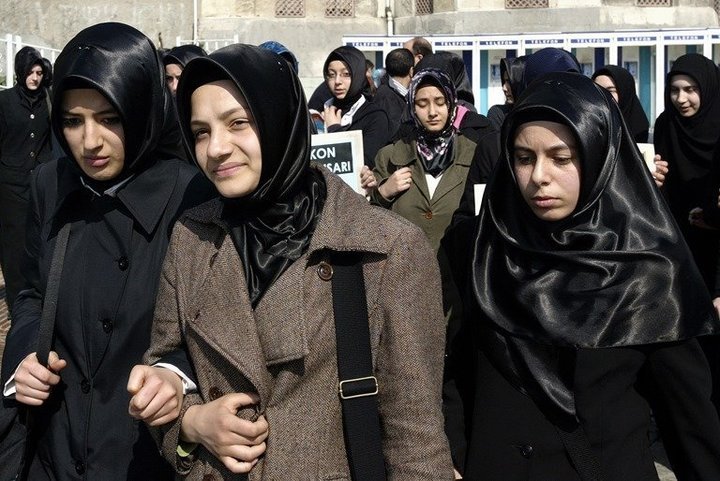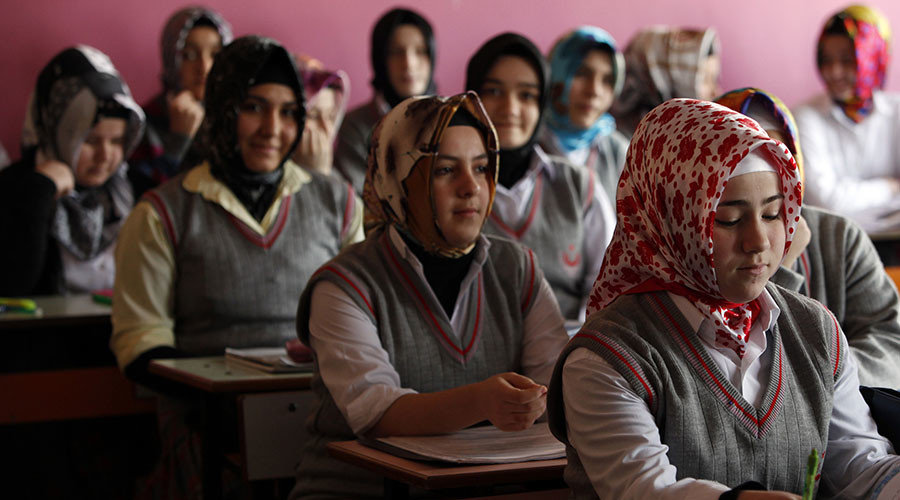By Mehwish Ayyub | Supervisor
“WHEN YOU INVEST IN A GIRL’S EDUCATION,
SHE FEEDS HERSELF,
HER CHILDREN,
HER COMMUNITY
& HER NATION”.
Educate a Girl is a partnership between Dawood Global Foundation and Facebook's internet.org to educate 1 million girls globally and was just recognized by the World Bank as top 2% women-led initiative in MENA. EAG has successfully educated 1000 deserving girls in Karachi, Pakistan and 1250 in Lagos, Nigeria, including those orphaned by the atrocities of the Boko Haram.
Now as we are moving towards Turkey, people ask us the same question which they asked when we launched in Nigeria that why this country, so this time they ask us why Turkey?
So we thought why we don’t answer everyone.
Despite the fact that various laws and regulations have supported basic education in Turkey since Ottoman times, the state of education remains a barrier to development -- especially with respect to women. Following the proclamation of the Turkish Republic, primary education was declared to be compulsory and this status was subsequently secured by Article 42 of the 1982 Constitution. However, statistics reflect that illiteracy and relatively low school enrolment rates continue to be a problem. Gender differences in literacy (80.6% for women as opposed to 93.9% for men according to the 2000 census) and current school enrolment rates (91.8% for girls and 100% boys at the primary level) show inequality in access to education.
Gender differences are greater in rural than in urban areas. Of women in urban areas, 16.6% cannot read or write and as much as 30.8% of their rural counterparts are illiterate while only 3.9% of urban and 9% of rural men are illiterate. Migration from the eastern to western region, usually from rural to urban settlements, is still common in Turkey so the problem of female illiteracy is carried to towns. Large numbers of rural migrants settle in the squatter areas or gecekondular quarters of many Turkish cities. Consequently female illiteracy and lack of access to education constitutes a serious problem in these areas
Regional distribution of female illiteracy is another point which deserves attention: illiteracy rates show a decline from the Southeast to Northwestern region. The most striking illiteracy rate is observed in the Southeast where 39% of women are illiterate, followed by the East and Black Sea regions where rates are 35% and 21% respectively.
There have been extensive studies on differential education opportunities among genders. King and Hill examined the barriers to women’s education in developing countries, and conclude that despite the decrease in the gender gap, girls still receive less education than boys (King and Hill, 1993). One of the main factors behind this is the institutional structure where there are biases against girls’ school choice, and another one is the cultural impediments and different standards applied to genders . There is also discrimination and segregation in the labour market, which pushes women to select certain professions and get training for them. The World Bank data show that there has been a significant improvement for the girls’ enrolment in schools. For example, the secondary school enrolment rate among girls in low income countries was around 26% in 1990 and rose to 41% in 2001. The school enrolment rate for boys in the same set of countries has gone up from 42% in 1990 to 51% in 2001 (World Bank, 2005). This indicates a convergence but there is still a 10% gap between the genders.
Despite the low investment in girls’ education, the returns to schooling for women are found to be quite high. In some cases, the returns to secondary schooling for girls are estimated to be higher than it is for boys (Dollar and Gatti, 1999). This is also true for Turkey, where for all schooling categories; the female rate of return is higher according to the most recent data . The biggest discrepancy is for secondary school, and vocational training. Women benefit extensively from attaining both formal schooling and vocational training while for men the returns have remained stable over time. Besides to the private returns, there are also socially negative effects of not sending girls to schooling or underinvesting in their education. The economic growth is adversely affected by gender inequality through two channels. The first is the direct influence of having lower average years of education and lower average quality of human capital in the nation. The second impact comes indirectly from the consequences gender education inequality has on child mortality, and fertility rates. It has been shown that as mother’s education increases child mortality and fertility rates decrease. Both of these factors are extremely significant for the overall development of the low income countries. As understood from these studies, several factors can influence boys’ and girls’ education options in a dissimilar manner leading to not only disparities across genders but also among the females themselves. Therefore, analyzing the education opportunities for girls is a prominent exercise, especially for developing countries where schooling for this group offers potential contribution to economic growth and individual well-being.
Around 40 percent of Turkish women go to university, but only 11 percent graduate. Activists say a range of obstacles, from gender bias in high school to cultural pressures, pushes women out of education and widens Turkey’s workforce gender gap and all of this explains it very well that why Turkey is our next stop for Educate a Girl.
We know we can transform many lives in Turkey and for that we need help from our wonderful donors like you all.
Together, we are transforming lives.
Project reports on GlobalGiving are posted directly to globalgiving.org by Project Leaders as they are completed, generally every 3-4 months. To protect the integrity of these documents, GlobalGiving does not alter them; therefore you may find some language or formatting issues.
If you donate to this project or have donated to this project, you can receive an email when this project posts a report. You can also subscribe for reports without donating.

